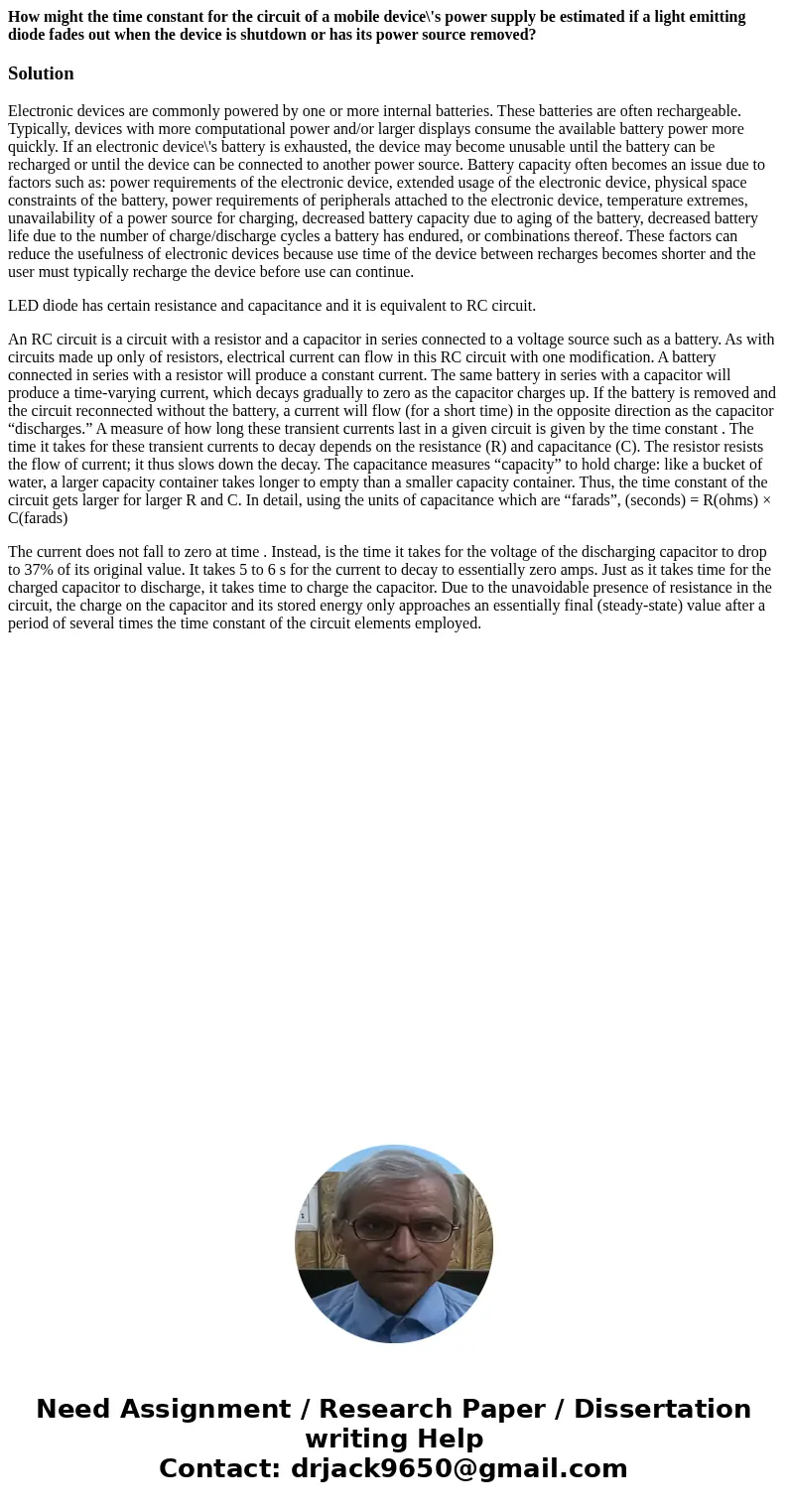How might the time constant for the circuit of a mobile devi
How might the time constant for the circuit of a mobile device\'s power supply be estimated if a light emitting diode fades out when the device is shutdown or has its power source removed?
Solution
Electronic devices are commonly powered by one or more internal batteries. These batteries are often rechargeable. Typically, devices with more computational power and/or larger displays consume the available battery power more quickly. If an electronic device\'s battery is exhausted, the device may become unusable until the battery can be recharged or until the device can be connected to another power source. Battery capacity often becomes an issue due to factors such as: power requirements of the electronic device, extended usage of the electronic device, physical space constraints of the battery, power requirements of peripherals attached to the electronic device, temperature extremes, unavailability of a power source for charging, decreased battery capacity due to aging of the battery, decreased battery life due to the number of charge/discharge cycles a battery has endured, or combinations thereof. These factors can reduce the usefulness of electronic devices because use time of the device between recharges becomes shorter and the user must typically recharge the device before use can continue.
LED diode has certain resistance and capacitance and it is equivalent to RC circuit.
An RC circuit is a circuit with a resistor and a capacitor in series connected to a voltage source such as a battery. As with circuits made up only of resistors, electrical current can flow in this RC circuit with one modification. A battery connected in series with a resistor will produce a constant current. The same battery in series with a capacitor will produce a time-varying current, which decays gradually to zero as the capacitor charges up. If the battery is removed and the circuit reconnected without the battery, a current will flow (for a short time) in the opposite direction as the capacitor “discharges.” A measure of how long these transient currents last in a given circuit is given by the time constant . The time it takes for these transient currents to decay depends on the resistance (R) and capacitance (C). The resistor resists the flow of current; it thus slows down the decay. The capacitance measures “capacity” to hold charge: like a bucket of water, a larger capacity container takes longer to empty than a smaller capacity container. Thus, the time constant of the circuit gets larger for larger R and C. In detail, using the units of capacitance which are “farads”, (seconds) = R(ohms) × C(farads)
The current does not fall to zero at time . Instead, is the time it takes for the voltage of the discharging capacitor to drop to 37% of its original value. It takes 5 to 6 s for the current to decay to essentially zero amps. Just as it takes time for the charged capacitor to discharge, it takes time to charge the capacitor. Due to the unavoidable presence of resistance in the circuit, the charge on the capacitor and its stored energy only approaches an essentially final (steady-state) value after a period of several times the time constant of the circuit elements employed.

 Homework Sourse
Homework Sourse